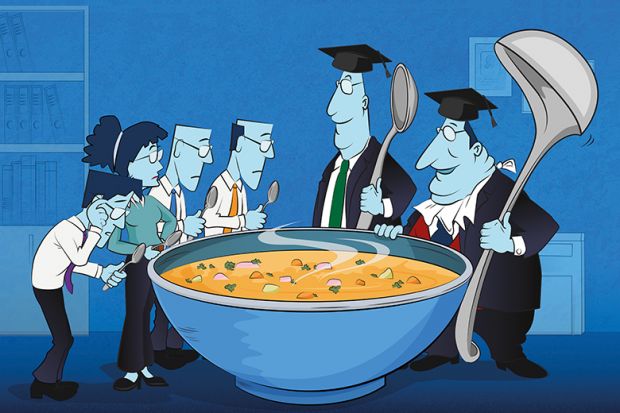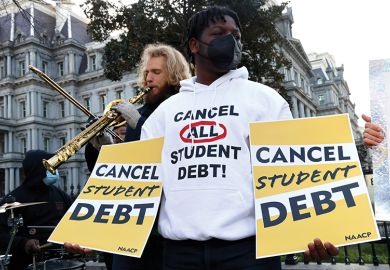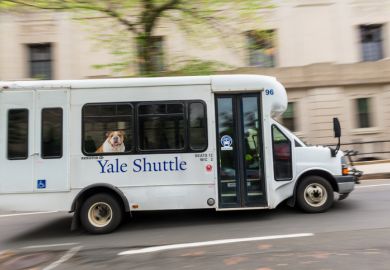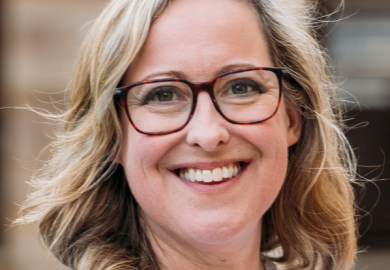There is an “inescapable irony” about higher education in the United States, reflects Michael McPherson.
“Most of the energy at the more selective institutions goes into picking out students who have demonstrated they will find it very easy to learn – the easiest possible people to teach,” explains the American economist and former liberal arts college president. Meanwhile, the “hardest people to teach are those who really struggle to get through high school”, which means that the “easier you are to teach, the more resources are directed at you”, he adds.
The multiple ways in which such perverse priorities reinforce inequality in US higher education and beyond are explored extensively in McPherson and Sandy Baum’s new book, Can College Level the Playing Field?: Higher Education in an Unequal Society (Princeton University Press).
The analysis arrives at a timely moment. Many no longer see US universities as the great social levellers they once were; in some eyes, the meritocratic institutions that gave unprecedented opportunities to GIs, women and the working class to rise above the circumstances into which they were born are gone. Instead, entrenched elitism – personified by the cash-for-places scandals in many high-profile institutions – means that universities are often seen to enforce, rather than curb, inequality. Cost matters, too: politicians are giving serious thought to cancelling the US’ near-$2 trillion student debt mountain, amid fears that a college education has become too much of a financial burden. Despite some noble efforts, elite universities are under pressure to show that they are more than finishing schools for the affluent.
McPherson’s background – his parents grew up in the Great Depression and did not even attend high school – adds urgency to his analysis. He took three degrees at the University of Chicago and eventually served as president of Macalester College, in Minnesota, and then the Spencer Foundation in Chicago, which carries out research on educational improvement. Baum’s upbringing was different: she is the daughter of a college president whose parents both had graduate degrees. She herself attended Bryn Mawr College in Pennsylvania and then Columbia University. But the two non-resident senior fellows at the Urban Institute – a Washington-based thinktank that produces “economic and social policy research” – agree that universities should be part of the solution, not the problem.
The challenges are enhanced by the tendency of educational research to view higher education and school-age learning as entirely distinct, both believe. At the Spencer Foundation, for instance, McPherson discovered “two completely different groups of researchers”, one devoted to higher education and the other looking at “K-12 education”, all the way from kindergarten to the end of high school, as well as “children’s emotional and social development”.
“That seems fundamentally unhealthy,” he says now. “It’s important to take a life cycle perspective.”
It is well known that the US is a very unequal society, but the array of statistics gathered by Baum and McPherson truly hammers home the point. For instance, the average income of the top 20 per cent of American households is 8.4 times that of the lowest 20 per cent, compared with 6.5 for the UK, 5.4 for the OECD as a whole and 4.6 for France and Germany.
Inequality also pervades every level of the education system. Seventy-three per cent of the young children of parents with a graduate or professional degree were attending preschool or kindergarten in 2018, compared with 57 per cent of those whose parents did not attend or complete high school. At the other end of the K-12 scale, 83 per cent of students graduating from high school in high-income families went straight on to college, but only 67 per cent of those from low-income families did.
Perhaps even more significantly, parental education level correlates strongly with the kinds of institutions their children attended. Only 31 per cent of those whose parents’ education stopped at high school were attending four-year courses at public or private non-profit institutions in 2018. For those where parents have bachelor’s degrees, the comparable figure was 64 per cent, rising to 83 per cent in the case of those whose parents have doctoral or professional degrees.
So how large a role do universities play in maintaining, and perhaps increasing, inequality?
In recent years, we have seen a lot of attention paid to the role of higher education in “creating, exacerbating and perpetuating inequality”, responds Baum. The assumption, she explains, is that “if only the elite, highly selective colleges and universities would enrol and graduate more low-income students, we could reduce inequality”. Hence pundits and even congressional hearings, she points out, keep returning to the question: “Why is Harvard not lowering its tuition or taking more low-income students?”
For Baum and McPherson, the phenomenon of “undermatching” – when talented school-leavers from low-income backgrounds don’t go to the most selective institutions that would accept them but to less demanding local universities and colleges – is indeed a crucial issue that needs to be addressed. The more selective the institution attended by such students, the higher their chances of completing their degrees and the better their life prospects. And generous “needs-based aid” at the richest, elite universities often makes them the cheapest option for poorer students.
So why is undermatching so prevalent? Poor counselling in schools, a lack of information about financial aid packages and families that don’t understand the differences between institutions are among the answers identified. Concerns that low-income students would not feel welcome or comfortable in certain colleges also need to be tackled head-on, Baum and McPherson add.
Although the last issue is partly a question of perception, McPherson contends that this perception reflects reality. Speaking as a former college president, he notes that “it’s really important – and difficult – to create a genuinely welcoming environment because you have to have the imagination to see how strange a college like Macalester looks to someone who grew up in North Minneapolis. They don’t know about residential life and may not have met a college graduate except their teacher. We fail all the time to anticipate what a challenge it is to make that move.”
When he spent a couple of weeks at the University of California, Berkeley, recalls McPherson, he kept getting lost because “Berkeley’s signage was miserable. For me, it was an annoyance. But if you come from [a poor neighbourhood] and can’t find the places you are meant to go, the overwhelming message is: obviously you don’t belong here…It bothers me immensely if we recruit and throw money at low-income students with high test scores and then we don’t recognise that they need a great deal of support to feel that they are fully members of the community.”
Except perhaps at the very richest institutions, finances are also a core issue.
“There are trade-offs,” explains Baum. “If you spend a lot more money on financial aid and take in less tuition revenue, you have less to pay faculty, to renovate buildings and to do all the other things which actually contribute to the educational experience.” This approach risks alienating the more affluent students, not least because the levels of cross-subsidy can feel unfair to those paying full fees. In some cases, Baum continues, “institutions which have really made an effort to increase low-income enrolment have decided to pull back when a new president comes in because of concerns about revenues and competition. It’s a fine line to walk.”
More generous federal support is ideally required, in Baum’s view: “We need to ensure low-income students have enough public funding for them to go to the best place they can get into” – something she sees as having no “important social downside”.
The result is often life-changing for low-income students but has little negative impact on the more privileged students they “replace” since the latter have a great deal of cultural capital to fall back on, she says. Highly selective universities could adjust their admissions criteria for low-income students in the same ways that many regularly do for the children of alumni – never mind for potential athletics stars.
The focus on access to elite institutions is, however, only a small part of the story, McPherson and Baum argue. If higher education is to play its full role in addressing inequality, claims McPherson, society must focus less on “moving students from community colleges to Princeton”, which will benefit only a few individuals. Instead, states should seek to make community colleges and similar institutions more effective in retaining students and giving them the qualifications they need.
As Baum puts it, we need to see “the per-student funding gap” between institutions reduced, given that “states tend to dramatically underfund community colleges and regional public universities”. McPherson believes there is evidence that “simply spending more money on community colleges, even if it is not well directed, tends to improve completion rates”, suggesting that “the places are really starved and don’t need sophisticated strategies to do better”. Nonetheless, he would also like to see such colleges clarifying their missions and giving students more detailed guidance about the paths that are right for them.
Proposals to get more low-income students into selective institutions and to reduce dropout rates at community colleges may sound relatively modest, but Baum and McPherson are wary about many of the more ambitious “blockbuster answers” that would supposedly transform higher education.
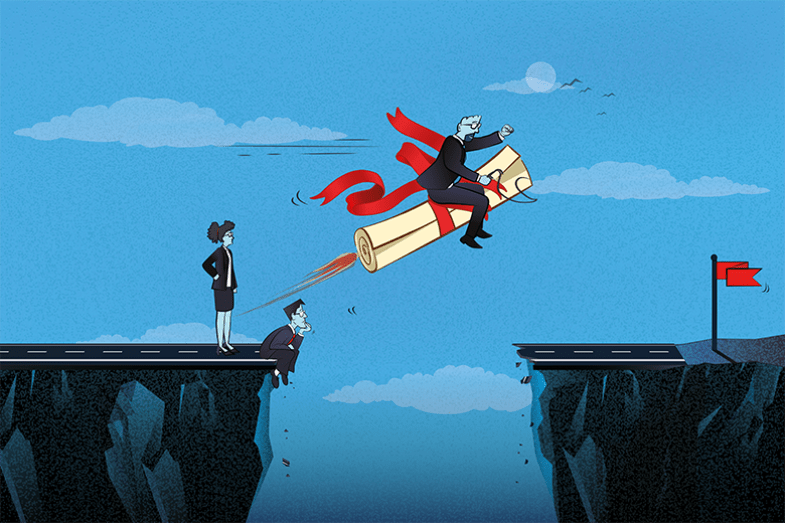
Proposals such as Bernie Sanders’ “free college” policies to eliminate all tuition fees – now gaining traction in Washington – tend to benefit the rich more than the poor and, as Baum points out, would do nothing to improve institutions that are currently “giving people something which is not valuable”. Debt forgiveness also focuses on graduates rather than current or future students. However, “if you want to create new educational opportunities, paying backwards for the people who have already gone to college isn’t going to help,” Baum notes.
As for the hype around digital solutions, McPherson takes the view that “you can have cheap online education or good online education, but you can’t have both”. Since cheap options “essentially demand that students teach themselves”, they tend to “work best for those with good bachelor’s degrees, who know how to learn on their own”, he says. “High-quality digital education requires a lot of support, good materials and a decent level of human contact.”
As this last point suggests, what happens within higher education is decisively influenced by students’ preparedness for college as they emerge from high school. And this is shaped not only by the very variable quality of schooling but also by factors such as poverty, housing, neighbourhoods and healthcare, where the US tends to be much more unequal than most other Western countries.
Can College Level the Playing Field? makes a forceful case that “higher education will not come close to equalising outcomes for young people from different backgrounds until satisfactory early life conditions are more nearly universal”. Data show that the US devotes a smaller proportion of post-secondary education spending to the pre-college years than many other countries do. “Compensating at later ages for the effects of early inequalities in children’s treatment and opportunity is more expensive, less effective, and more limited in reach than preventing the inequalities in the first place,” the authors argue. “Large and effective investment in early education” is not only more cost-effective but also tends to boost the efficacy of any additional “late adolescent investments”, including “subsidised college tuition”.
This has two important implications. If we are serious about reducing inequality, Baum argues, “focusing on higher education as a scapegoat isn’t going to get us very far”. Perhaps surprisingly for someone so steeped in higher education, she would like to see “advocates for higher education opportunity” focus less on how much is spent specifically on higher education and instead “to have early childhood at the top of their agenda. If I had to pick between extending federal grants to college students or making sure families have access to childcare, I’d go for the childcare. Otherwise, the programmes won’t do any good because children won’t be ready to benefit.”
Although she doesn’t go as far as saying that higher education gets too large a share of the spending pie, Baum concedes that “it probably gets too much attention” and believes that people working in the sector “have a responsibility to direct attention to other areas and to put some of their weight behind them”.
If income inequality in the US is profoundly shaped by what happens before college, we also need to look at what happens afterwards, Baum and McPherson argue. One factor is the exceptionally large earnings premium (by both historical and international standards) people gain from a college degree in the US today, which translates into inequality of opportunity in the next generation. This can be reduced through raising the minimum wage or making tax systems more progressive, policy decisions over which universities have limited influence, but also by increasing the supply of graduates so that they have less scarcity value. (This happened briefly in the 1960s and early 1970s.)
Here we confront some fundamental issues for universities and their students. Although few people would go to college if there were no long-term financial advantages, what are the implications of reducing the graduate premium?
Baum would like universities to think more deeply about “what kinds of people they are creating and nurturing”. Is the aim to “enable them to make as much money as possible or to develop values which would help them contribute more to society by addressing social justice or reducing inequality”?
“If you go back 20 or 30 years and look at studies of what students hoped to get out of college,” says McPherson, “the predominant response used to be ‘to gain an improved philosophy of life’, but now, by far, the predominant response is ‘to make more money’”.
This is partly because “colleges have marketed themselves as money-making machines at the expense of the other good reasons for going to college”, he adds.
Baum and McPherson make a compelling case that US universities and colleges must do more to address inequality, but also that such institutions are far from the only barriers to creating a fairer society; any efforts they make to widen participation need to be supported by much wider policy interventions, from early years education and affordable childcare to progressive tax policies. Nonetheless, it is equally clear that many higher education institutions urgently need to reflect on the extent to which, as things stand, they are part not so much of the solution as of the problem.
Register to continue
Why register?
- Registration is free and only takes a moment
- Once registered, you can read 3 articles a month
- Sign up for our newsletter
Subscribe
Or subscribe for unlimited access to:
- Unlimited access to news, views, insights & reviews
- Digital editions
- Digital access to THE’s university and college rankings analysis
Already registered or a current subscriber?
